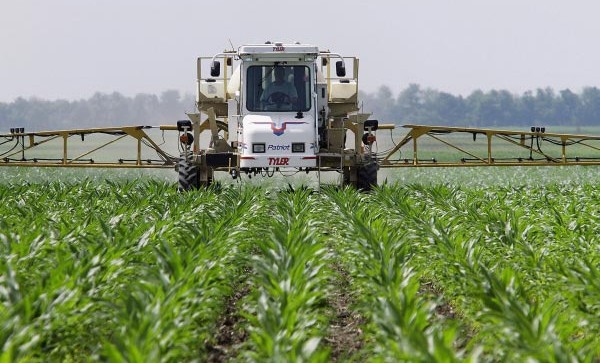Researchers at the U.S. National Institutes of Health have found that use of the pesticide dicamba can increase the risk of developing numerous cancers, including liver and intrahepatic bile duct cancers, acute and chronic lymphocytic leukemia, and mantle cell lymphoma.

The findings come as use of the drift-prone herbicide has skyrocketed across millions of acres throughout much of the Midwest and South in the past three years due to the Environmental Protection Agency’s approval of dicamba on genetically engineered soybeans and cotton.
The study, published in the peer-reviewed International Journal of Epidemiology, is the most comprehensive epidemiological study on dicamba’s association with cancer to date. It followed nearly 50,000 pesticide applicators in Iowa and North Carolina for over two decades, documenting pesticide use and cancer incidence.
“This sweeping study exposes the terrible human cost of the EPA’s reckless decision to expand the use of dicamba,” said Nathan Donley, a scientist at the Center for Biological Diversity. “For the EPA to approve widespread use of this poison across much of the country without assuring its safety to people and the environment is an absolute indictment of the agency’s persistent practice of rubber-stamping dangerous pesticides.”
In addition to studies in humans showing dicamba use is associated with certain types of cancers, animal studies have found that dicamba can alter liver function in a way that is known to induce liver tumors and promote liver cancer in combination with other carcinogens. Dicamba is also known to cause DNA mutations and induce oxidative stress, two pathways known to cause cancer.
In 2015 the World Health Organization’s International Agency for Research on Cancer classified glyphosate, another widely used herbicide, to be “probably carcinogenic to humans” based on similar human, animal and mechanistic criteria.
“Just as with glyphosate, we were falsely told that dicamba was completely safe for humans and there was nothing to worry about,” said Donley, who was not involved in the NIH study. “With dicamba’s ability to drift for miles, people in many areas of the country are now routinely forced to breathe in this dangerous pesticide.”
In approving dicamba for over-the-top use on genetically engineered cotton and soybeans, the EPA concluded that the herbicide was “not likely to be carcinogenic to humans.” Due to that designation, the EPA approved the expanded use of dicamba in 2016 without analyzing the cancer risk posed by the herbicide.
In addition, in 2018 the EPA reapproved the expanded dicamba use despite documented reports that the drift-prone pesticide damaged an estimated 5 million acres of crops, trees and backyard gardens between 2016 and 2017.
The EPA is expected to re-approve dicamba again by the end of this year.
A report released by the Center in 2018 found that the recently expanded dicamba use threatens the already imperiled monarch butterfly: it harms flowering plants that provide nectar for the adults as they travel south for the winter and harms the milkweed that provides an essential resource for reproduction.
National Family Farm Coalition, Pesticide Action Network, Center for Food Safety and Center for Biological Diversity have challenged the approval of the new dicamba use on GE crops. A decision on that case is expected soon. The organizations are asking for the court to vacate, or cancel, the new dicamba use, which would prevent millions of pounds of dicamba being applied this year.




















My father and mom were farmers, both has passed. My father passed with emphysema, was not a smoker and my mom passed with cancer. I believe my father death was because of pesticides that he used. I must ask is there anything we can do to stop the nee dicamba use.
Thugs and criminals have obviously taken over our government. Only tossing them all out on the street will solve this criminal approach to regulation.